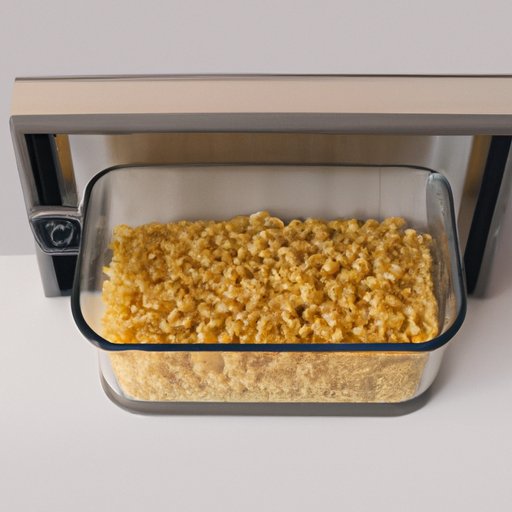
Introduction
Reheating leftover pasta is something that many of us have struggled with. It can be difficult to get the same taste and texture as the freshly cooked meal, especially when using the wrong method. But worry not, there are multiple ways to reheat pasta that will leave you with a delicious and satisfying meal. The purpose of this article is to provide you with different methods for reheating pasta so that you can enjoy your leftovers without any hassle.
The Microwave Method
The microwave is perhaps the most convenient and popular way of reheating pasta. Here’s how you can do it:
1. Place the pasta in a microwave-safe dish.
2. Cover it with a paper towel or microwave-safe lid but leave a gap to allow steam to escape.
3. Heat on high power for 1-2 minutes.
4. Take it out and mix the pasta around.
5. Put it back in for 30-second intervals until the desired temperature is reached.
The advantage of using the microwave method is that it’s quick and easy to do, making it perfect for when you’re in a rush to eat or don’t have much time.
The Stovetop Method
The stovetop method is a great way to reheat pasta if you want to avoid it becoming dry or overcooked. Here’s how:
1. Heat a non-stick skillet or sauté pan over medium heat.
2. Add a small amount of oil or butter to the pan.
3. Once the oil or butter is hot, add the cold pasta to the pan and break up any chunks.
4. Keep stirring the pasta around in the pan until it’s heated through.
5. Serve and enjoy!
The advantage of using the stovetop method is that it allows for more even heating of the pasta and avoids it sticking together and becoming clumpy.
The Oven Method
The oven method is best for larger pasta dishes such as lasagna or baked dishes. Here’s what you need to do:
1. Preheat your oven to 350°F (175°C).
2. Place the cold pasta dish into an oven-safe baking dish.
3. Cover the dish with aluminum foil.
4. Heat in the oven for 20-30 minutes, depending on the size of the dish.
5. Remove the foil and continue to bake for another 10-15 minutes or so, until the dish is hot throughout and the top layer of cheese is melted.
The advantage of using the oven method is that it’s perfect for dishes that need more even heating, and gives you a crispy and golden top layer.
The Broiling Method
The broiling method is ideal for reheating pasta dishes that have a crispy top layer, but that have gone cold. Here’s how you can do it:
1. Preheat the broiler on your oven to high.
2. Place the pasta dish in an oven-safe dish.
3. Put the dish under the broiler and leave it for a few minutes until the top layer is crispy.
4. Take it out and serve immediately.
The advantage of using the broiling method is that it adds a crispy texture to the pasta, making it taste freshly cooked.
The Sous Vide Method
If you have a sous-vide machine, then you can use it to reheat pasta. Here’s what you should do:
1. Preheat your sous-vide machine to 140°F (60°C).
2. Place your cold pasta in a vacuum-sealed bag or sous-vide bag.
3. Once the water in the sous-vide machine has reached temperature, place the bagged pasta into the water.
4. Heat the pasta for 30-40 minutes.
5. Take out and serve immediately.
The advantage of using the sous-vide method is that it’s a fancy and precise way of reheating, and is especially good for delicate pasta dishes that need to be heated evenly.
Conclusion
There are different methods of reheating pasta, each with its own advantages. From quick and easy methods like microwave reheating to precise methods like sous-vide, anyone can find their preferred method. No more dry, lifeless pasta, with these simple techniques.
So, next time you have leftover pasta, try out these different methods to see which one suits you best. Reheating pasta has never been easier, and with these solutions, you can enjoy a delicious and satisfying meal.





